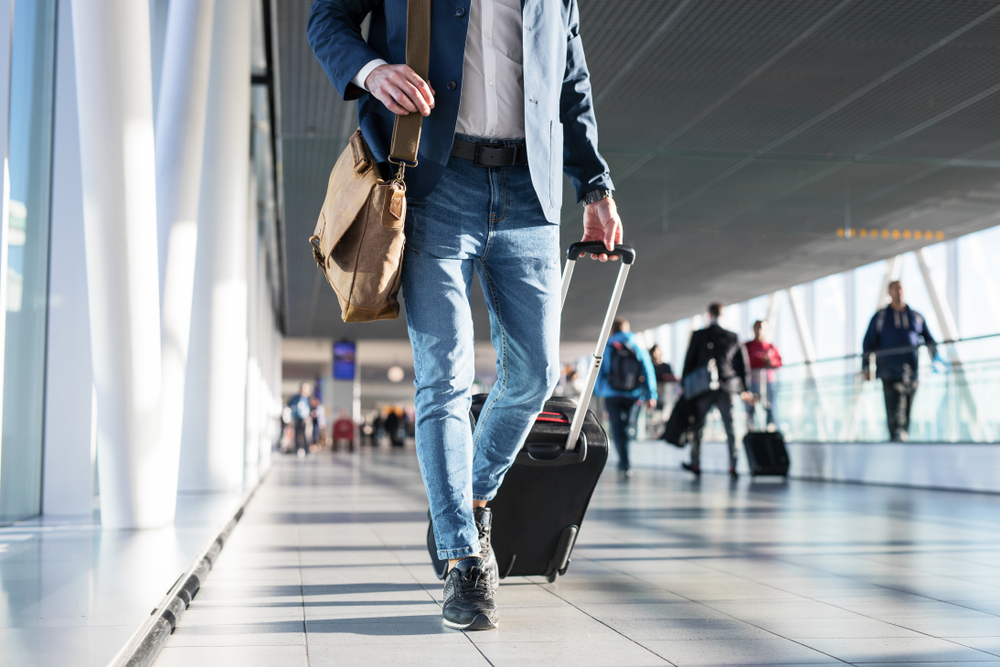- Flight anxiety is more common that you may think, but aviophobia (fear of flying) is manageable and treatable.
- Causes of flight anxiety include fear of crashing, claustrophobia, generalized underlying anxiety and previous negative flying experiences.
- Manifestations of flight anxiety include general anxiousness, physical symptoms such as sweating, hyperventilating and panic attacks.
- Therapies include exposure therapy, cognitive behavioral therapy and medication in some cases.
Flight anxiety, also referred to as aviophobia, is an anxiety condition that presents as an overall fear of flying. Specific fears pertaining to aviophobia range from anxiety over plane crashes to claustrophobia when the plane doors close and the flight takes off.
If you suffer from aviophobia, you know firsthand how it can impact your life. Whether you spend your flights in a constant state of worry or actually can’t step foot on a plane, a fear of flying can prevent you from visiting much of the world. The good news is that aviophobia can be managed and even treated. This guide aims to explain what aviophobia is, describe some of its triggers and offer tips to make flying easier, or even just possible, for you.
A Common Affliction
Flight anxiety is highly common, with statistics showing that approximately 2.5 to 40% of fliers experience some form of aviophobia each year. Anxiety levels in those who struggle with aviophobia range from mild to severe. While flight anxiety is a very real anxiety disorder in which many sufferers feel there is no hope to overcome their fears, the good news is that even the most severe cases of aviophobia are often manageable and treatable.
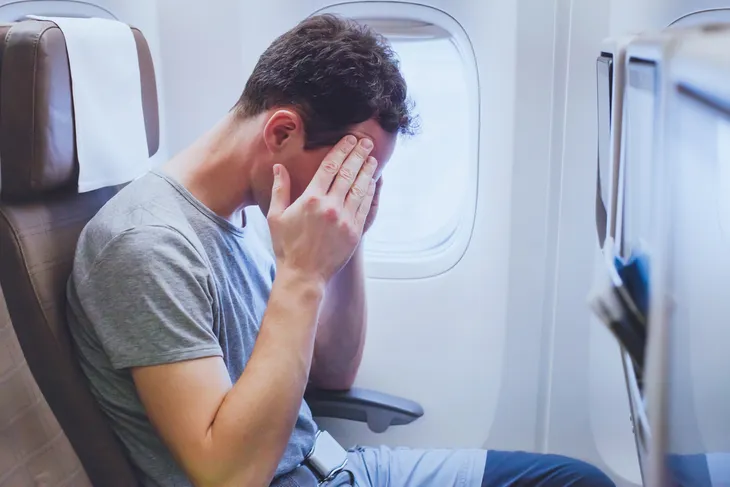 Shutterstock/Song_about_summer
Shutterstock/Song_about_summerFear of Flying Causes
An individual can develop a fear of flying for a variety of reasons. News coverage of a plane crash or a plane hijacking is sometimes enough to trigger an anxious episode in certain people, while others may feel anxious due to past flying experiences that possibly involved heavy turbulence or mechanical issues.
Alternatively, people with generalized anxiety disorders may fear flying due to a lack of control of their immediate environments, which can lead to panic attacks mid-flight, and others may feel claustrophobic due to spending extended periods of time in an enclosed space. In today’s world where people have heightened anxiety due to the pandemic, individuals with an aversion to germs may fear exposure to illnesses when traveling in close proximity to others.
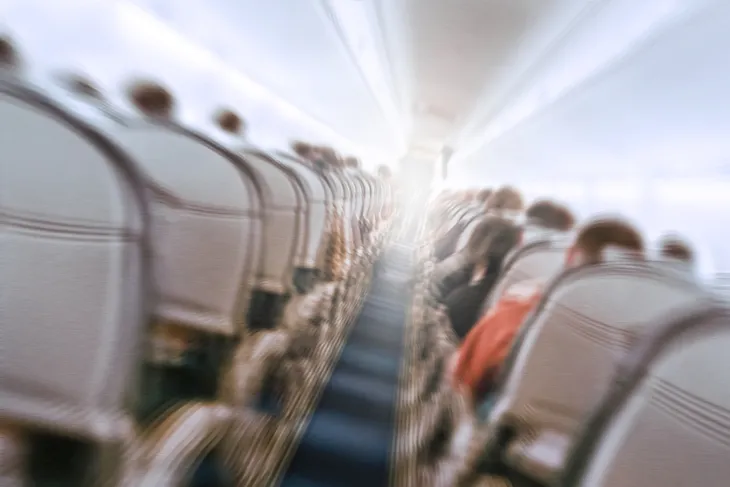 Shutterstock/diy13
Shutterstock/diy13Symptoms of Aviophobia
Symptoms of aviophobia can develop days before a flight or they may begin the moment an individual steps onto an airplane. In some cases, passengers may start feeling anxious mid-flight due to unexpected turbulence or other in-flight factors. Symptoms of aviophobia include overwhelming feelings of dread, sweating, heart palpitations, dizziness and clouded thinking. Individuals may also experience upper gastrointestinal issues (nervous stomach) and racing thoughts. In some cases, a passenger may experience a full-blown panic attack in which they start to hyperventilate.
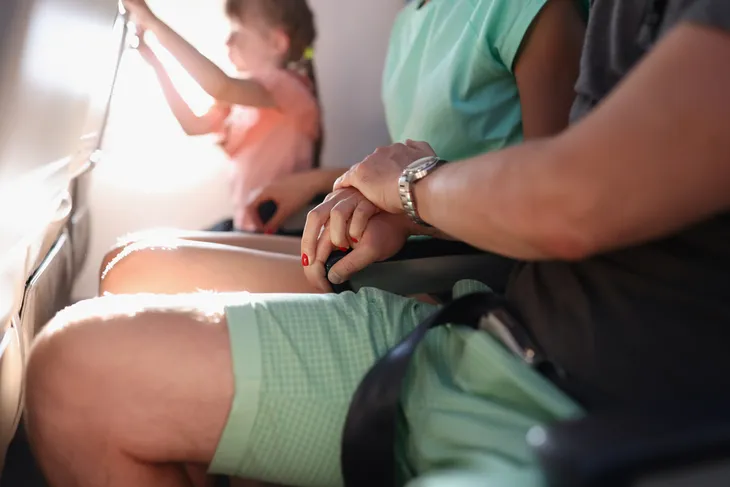 Shutterstock/H_Ko
Shutterstock/H_KoAnxiety and Panic Triggers During Flights
For certain people, sudden changes in the normal flight routine, such as the lighting up of the fasten seatbelt sign or a slight elevation drop, can trigger anxiety and panic. While both of these situations are fairly common on most flights, a passenger with underlying anxiety related to flying may automatically go to a negative thought space in which they believe a lighted seatbelt sign means dangerous turbulence or an elevation drop signifies a mechanical issue or an impending crash. Anxiety isn’t always rational and small, otherwise meaningless changes may feel very significant to someone with anxiety.
 Shutterstock/NicoElNino
Shutterstock/NicoElNinoFight or Flight Anxiety Response
The fight-or-flight response is a common reaction to specific situations that trigger feelings of anxiousness. Also referred to as an acute stress response, fight or flight essentially means deciding to fight or flee a dangerous situation. It’s an actual physical and psychological response in which the body prepares to react, and in many cases, the threat of danger is real. For individuals with flying anxiety, turbulence, unruly passengers and minor mechanical issues can trigger a fight-or-flight reaction. However, it’s impossible to flee a situation where danger is perceived in an airplane that’s in mid-flight, which can lead to increased anxiety and possible panic attacks in anxious passengers.
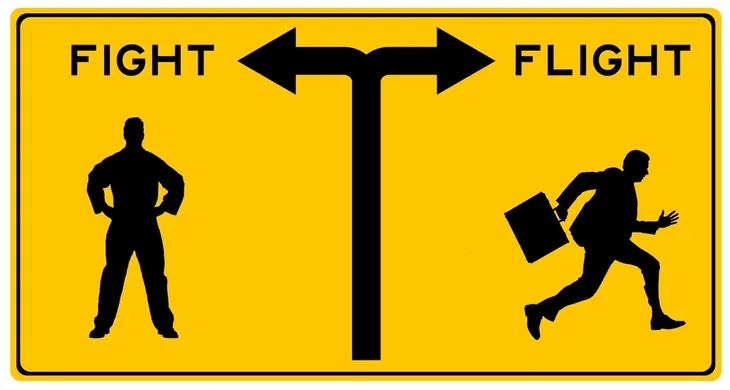 Shutterstock/desdemona72
Shutterstock/desdemona72Deep Breathing Exercises to Calm Nerves
For individuals who experience mild symptoms of anxiety when boarding a plane or in mid-flight, simple deep breathing exercises may help balance the mind and body and promote a feeling of calm. Deep breathing is also referred to as diaphragmatic breathing, and the exercises can be practiced anywhere and at any time. To perform a deep breathing exercise, start by taking a normal breath. Exhale as you normally would, then attempt to take a deeper breath by first breathing in slowly through the nose. Allow the chest and lower abdomen to rise and expand. Exhale slowly through the nose or mouth. Repeat until feelings of anxiety start to lessen.
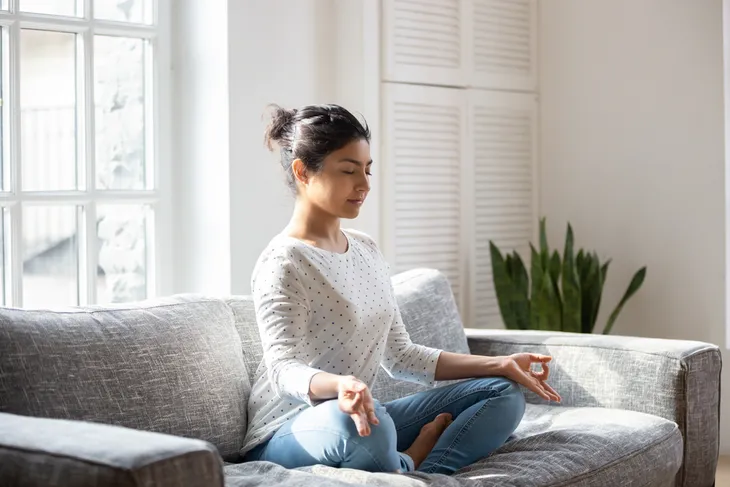 Shutterstock/fizkes
Shutterstock/fizkesBehavior Therapies to Help Manage Anxiety
Behavioral therapy is a helpful option for individuals with moderate flight anxiety. Also known as cognitive therapy, this type of treatment, which is offered by a professional therapist, helps individuals with aviophobia recognize their fears in a rational way and learn how to react differently when faced with uncomfortable situations. In the case of aviophobia, a therapist may teach the sufferer coping skills to help them remain calm and centered during a flight.
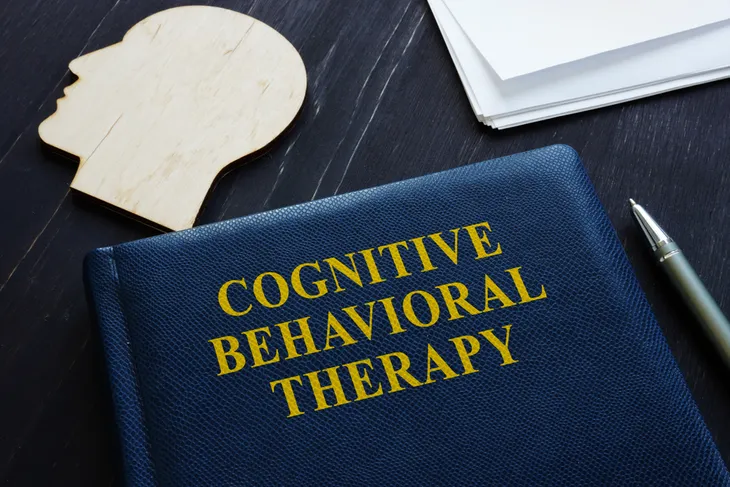 Shutterstock/Vitalii Vodolazskyi
Shutterstock/Vitalii VodolazskyiExposure Therapy for Severe Aviophobia
Exposure therapy is a treatment that exposes patients to the stimuli that they are frightened of in order to face their fears directly. Individuals with aviophobia can participate in simulated flight exercises that include boarding planes and realistic airline procedures, such as takeoffs and landings, to practice for actual flights. There are also fear-of-flying courses that offer aviation education and exposure therapy. Aviation education helps anxious fliers learn more about how airplanes function and the safety procedures that all airlines must follow.
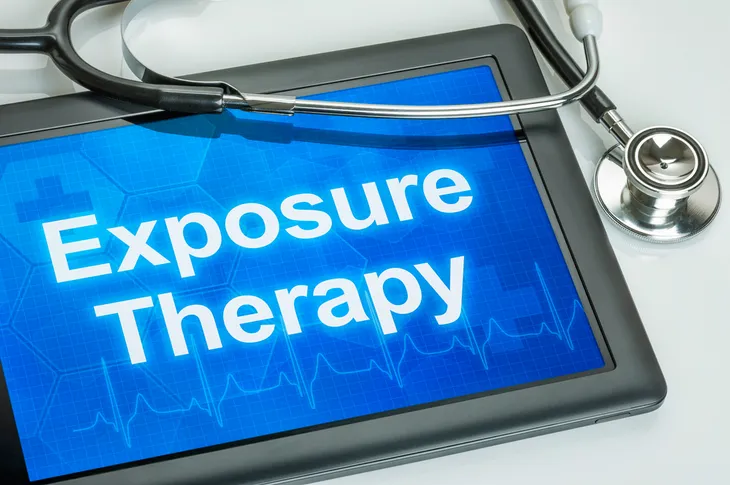 Shutterstock/Zerbor
Shutterstock/ZerborConsuming Alcoholic Beverages to Soothe Flight Anxiety
While a common belief is that consuming an alcoholic beverage or two is a good way to reduce flight anxiety, it’s not the best option. Over-consumption of alcohol on an airplane can interrupt sleep cycles and worsen symptoms of jet lag, and alcohol only works as a temporary band-aid on individuals with deep-rooted anxiety that should be properly addressed. Drinking too much on an airplane can also lead to potentially embarrassing and inappropriate situations.
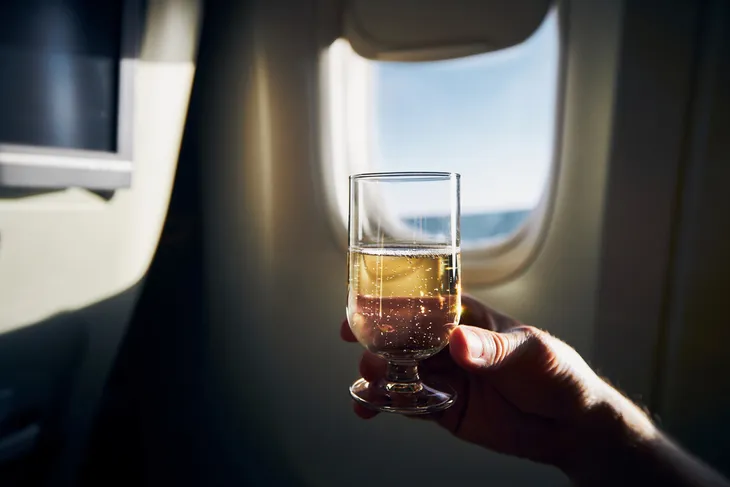 Shutterstock/Jaromir Chalabala
Shutterstock/Jaromir ChalabalaPrescription Medications for Treatment of Aviophobia
If deep breathing techniques or therapies are not enough to help manage flight anxiety symptoms, taking anti-anxiety medication prior to flying can be beneficial for some people. It’s important to note that anti-anxiety medication should be prescribed by a physician and only taken as directed. Medications that might be prescribed include lorazepam, diazepam (Valium) and chlordiazepoxide. These medications work by inhibiting certain functions of the nervous system and boosting serotonin levels in the brain. Many anti-anxiety medications cause drowsiness, which helps passengers relax when flying.
 Shutterstock/Soru Epotok
Shutterstock/Soru EpotokFlight Preparation Tips to Help Prevent Anxiety
Anxious episodes when flying can be triggered by hasty scheduling, rushing to the airport and other unforeseen issues that may pop up as you prepare to fly. While there’s no way to predict everything that may or may not happen between the time you leave for the airport and the time you board the plane, taking some steps to prepare for your trip can help to reduce your overall stress levels and keep anxieties at bay.
Packing your suitcase a day or two prior to your trip can help prevent rushing on the day you’re scheduled to fly, and many airlines offer online check-in services, which saves passengers the time spent standing in long, crowded check-in lines. Consider downloading a podcast, an audiobook or some relaxing music onto your phone, laptop or tablet so you have something to focus on as you fly. Practicing deep breathing prior to boarding the plane and once you reach your seat can help you begin your flight with feelings of calm and balance.
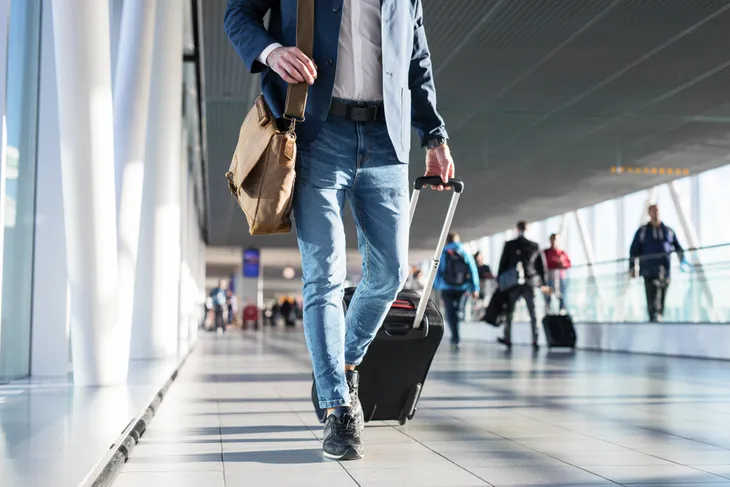 Shutterstock/Kaspars Grinvalds
Shutterstock/Kaspars GrinvaldsWhen to Seek Help for Aviophobia
Aviophobia is a real condition that can cause severe anxiety in many individuals. While mild cases of aviophobia are easily managed with deep breathing and behavioral techniques, severe aviophobia can cause sufferers to avoid flying altogether. If your fear of flying has become unmanageable with traditional methods and your symptoms are disrupting your desire to visit new destinations for vacation or business, consulting a mental health professional is an important first step in addressing your anxieties and fears.
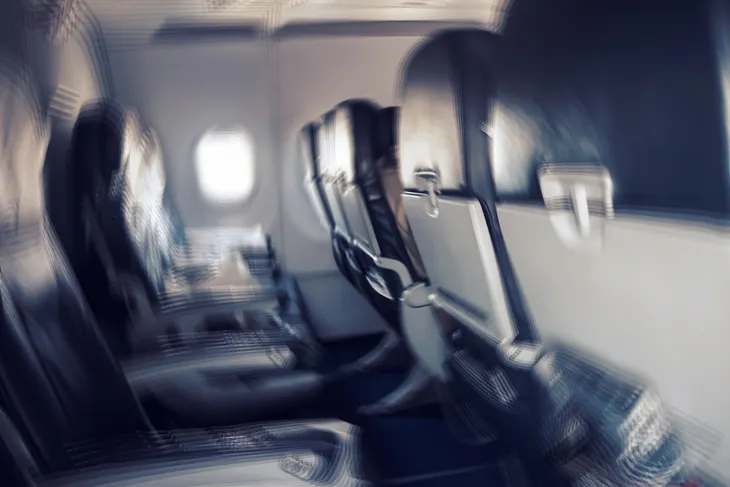 Shutterstock/diy13
Shutterstock/diy13